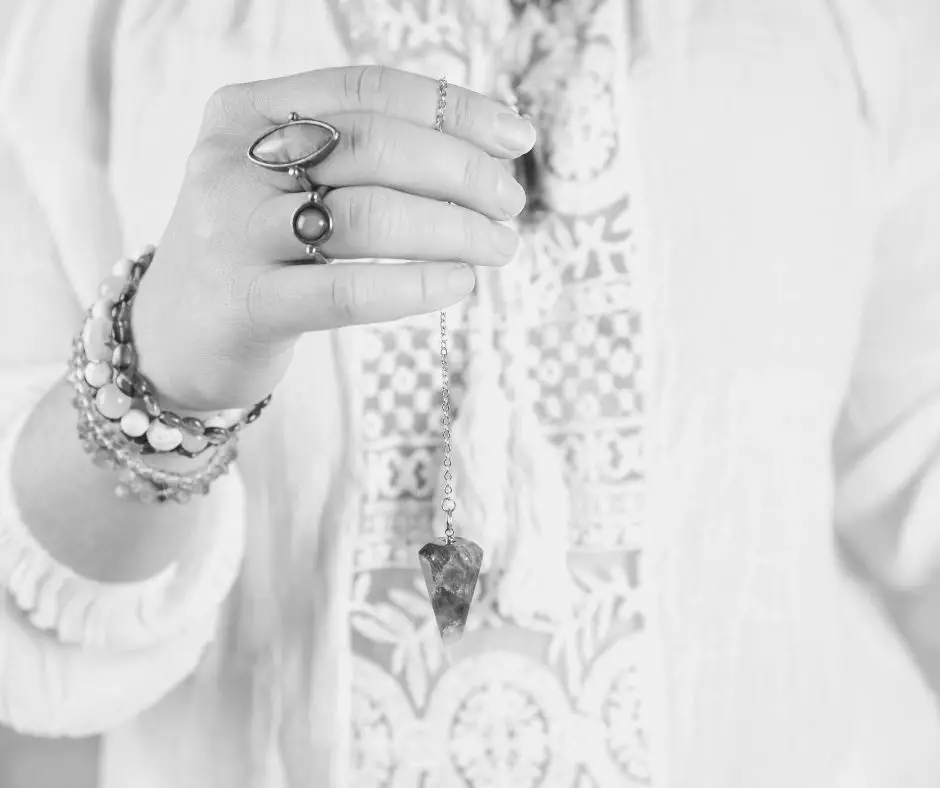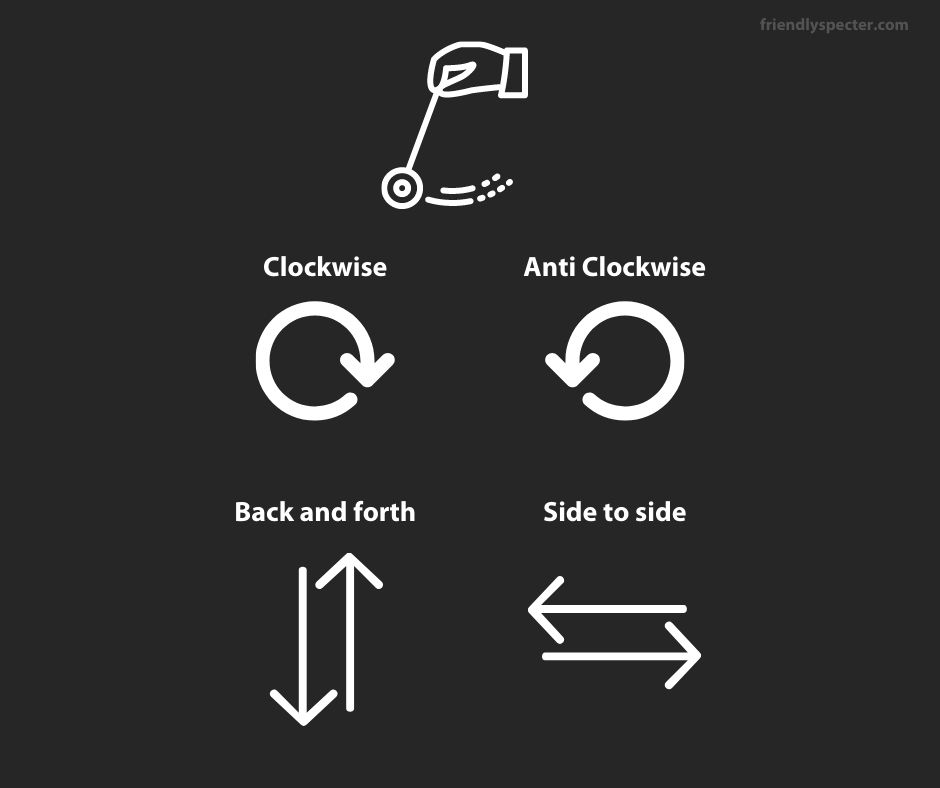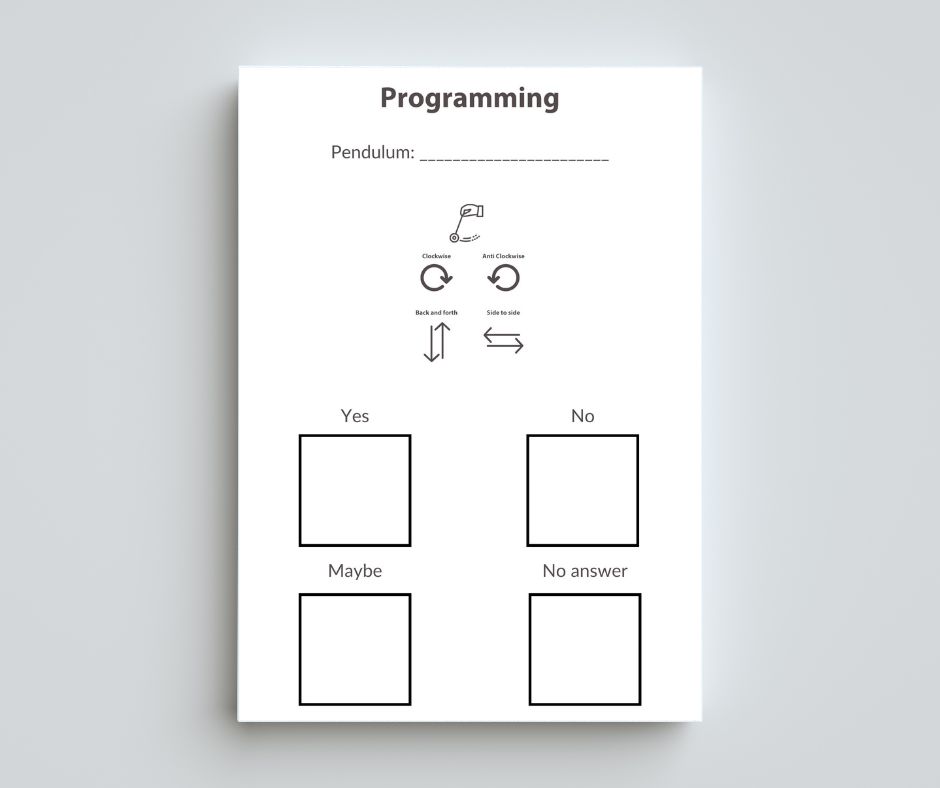Well, you have just bought your first pendulum but realized you have no idea how to know if it says yes or no. Should it move in a particular way, back and forth? Side to side? The worst thing is that it is unique to all pendulum readers. Let’s figure out what your yes and no look like.
Ask the pendulum to show you what swing means yes or no answer. The unique swings of the pendulum are your answers. There is no one-fits-all movement to determine yes or no when using a pendulum.
Even if there is no one-fits-all answer to a yes or no when using a pendulum, it is pretty straightforward to learn your unique swing patterns. The pendulum answers yes with one movement and no with another. Let’s learn how your pendulum communicates with you.
How to know if a pendulum answers yes, no, or maybe
A pendulum can only answer yes, no, maybe, and in some cases (if you want it to) that it doesn’t want to answer the question. It responds to you by swinging in a particular manner depending on the answer.
- Yes
- No
- Maybe
- No answer
The tricky thing with pendulums is that the movement they show you for the answers is unique to you. This means, for example, that a “yes” can look different for different people. That is why another paranormal investigator, ghost hunter, or pendulum dowser has unique ways of determining the answers.
But don’t fear; you will be able to determine your unique swinging patterns with ease. This is done when you program your pendulum.
How to program your pendulum
When you get a new pendulum, you need to program it to answer your questions. Follow the steps below, and you are ready to ask your pendulum questions in no time.
#1: Cleanse the pendulum with three taps
Start by cleansing the pendulum from residual energy. The easiest way is by tapping on it three times and imagining how residual energy falls off like dust.
#2: Hold your pendulum correctly
When you have cleared, it is time to program it. Hold the pendulum in your hand. Be sure not to hold it straight in front of you. If you hold it straight in front of you, your chakras might interfere with the reading.
I tend to aim to hold it over my right leg (I keep my pendulum in my right hand). If you are a leftie, aim for the left thigh. You get it.
If you want to, you can hold one hand under the pendulum. I tend not to do this myself, but I know many prefer this technique. In the picture below, you get an example of this technique.

If you prefer holding it without the hand, it looks like this. There are no right or wrong ways of doing this; you have to go with what feels best for you. In the beginning, it is a great idea to try different techniques. With time you will get in the groove and know precisely how you want to hold it. You do you, always!

It doesn’t matter how you hold it, as long as it is free to swing. Some keep it in the bead at the end of the string. Some tend to hold the sting further down. I tend to hold it further down the string as my pendulums have long chains.
The longer string or chain, the easier it is to notice the pendulum’s movement. Keeping the string on the longer side is always a great idea if you are a beginner.
#3: Ask the pendulum to show you yes
Make sure the pendulum is still before asking it to show you a “yes.”
- Hold the pendulum in your hand
- Make sure it has come to a complete still
- Ask the pendulum to show you “yes”
- Make a note of the movement or swing
- This movement is your unique “yes”
- Thank the pendulum for making it still again
Now it is time to ask the pendulum to show you “yes.” Make a note of the movement it offers you.
- Swinging back and forth
- Swinging side to side
- Clockwise movements
- Anti clockwise movements

To make this easy for you I have created a free printable template that you can use and store with your pendulum.

#4: Ask the pendulum to show you no
Make sure the pendulum has come to a complete still. This is done by thanking the pendulum. It is strange, but the movement will slow down. The procedure is the same as for yes.
- Hold the pendulum in your hand
- Make sure it has come to a complete still
- Ask the pendulum to show you “no”
- Make a note of the movement or swing
- This movement is your unique “no”
- Thank the pendulum for making it still again
It is time to ask the pendulum to show you “no.” Please make a note of the movement it offers you.
- Swinging back and forth
- Swinging side to side
- Clockwise movements
- Anti clockwise movements
#5: Ask the pendulum to show you maybe
Make sure the pendulum has come to a complete still. Now it is time to know how the pendulum moves when it says maybe. Not all questions can be answered with a yes or no, so this is an important step. If you skip this, the pendulum might get wonky and “irritated.”
- Hold the pendulum in your hand
- Make sure it has come to a complete still
- Ask the pendulum to show you “maybe”
- Make a note of the movement or swing
- This movement is your unique “maybe”
- Thank the pendulum for making it still again
It is time to ask the pendulum to show you “maybe.” Please make a note of the movement it offers you.
- Swinging back and forth
- Swinging side to side
- Clockwise movements
- Anti clockwise movements
#6: Ask the pendulum to show you it doesn’t want to answer
It is time for the final, perhaps the most important step. If you skip this step, you might end up with a pendulum that doesn’t want to cooperate. Giving the pendulum an option not to answer you creates mutual trust. Getting access to answers might not be of your highest good. You have to trust the pendulum to decide this.
And here we go again (I bet you know this by now!)
- Hold the pendulum in your hand
- Make sure it has come to a complete still
- Ask the pendulum to show you “no answer”
- Make a note of the movement or swing
- This movement is your unique “no answer”
- Thank the pendulum for making it still again
It is time to ask the pendulum to show you “maybe.” Make a note of the movement it offers you.
- Swinging back and forth
- Swinging side to side
- Clockwise movements
- Anti clockwise movements
- Complete still or erratic movements
#7: Write it down
Make sure you write down the directions of the pendulum on paper, so you don’t forget them. I have skipped this in the past, and that is not a great idea. Different pendulums respond in various manners. So your yes is only applicable with this particular pendulum. Store your note alongside your pendulum for future reference.
#8: Test the answers
When you know the movement of the different answers, you need to test that they are correct. It is a straightforward process, so don’t worry.
Pick up an object, like a book, and ask the pendulum, “Is this a book?”. Hopefully, the answer from the pendulum will be “yes.” Ask the pendulum if the book is a car (for example). Now you should get the no movement. Maybe “No answer” is harder to test. But if you got the yes and no right, it may be a great chance, and no answer is either.
- Ask the pendulum: Is this an X? (holding an X in your hand)
- Ask the pendulum: Is this a Y? (holding a Y in your hand)
- Repeat as many times as you like
#9 Practice, practice, practice
Getting correct answers every time is possible, but it requires a lot of work. I recommend testing the answers often; this is a way of practicing your dowsing skills. You will learn in what situations your pendulum might bring incorrect answers.
Make a note of the circumstances as follows:
- Sickness
- Frustration
- Stress
- Irony
- Fatigue
Make sure that you are using your pendulum in a dignified way. Do not tease it or be ironic. Always be respectful and honest with it. This will strengthen your relationship. Yes, you will build a relationship with your pendulum over time. It will become your friend, and you know when it is time to ask it questions or not.
Every time I start a session, I ask the pendulum if it wants to answer my questions or not. If it says no, respect this and leave it be for a while.
What to do when programming fails
At times pendulums are just not cooperating. The pendulum might answer with different movements when programming and checking the correctness. It can be that you are stressed, poorly treated, or that it just doesn’t want to bring you answers.
- Not clear questions
- Not a clear intent with your questions
- Residual energy
- Negative spirits or tricksters
- Not compatible
- Don’t want to answer your questions overall
Please make sure you always start your sessions by telling it you only want to speak with spirits of light that are there for your highest good. Sometimes, wonky reading can be due to tricksters or negative energies.
Another reason might be that you are not compatible with the pendulum. Easy as that. Don’t feel down or irritated; it just is. It is not on you and not the pendulum. You are just not compatible for some reason. Don’t try to understand why. Leave it be. Find yourself a new pendulum.

Another reason might be that it holds residual energies from previous readings. Be sure to cleanse it and clear it before starting your session. You might need to use a more invasive method than tapping three times to clear it. I often put it in the moonlight overnight, in a salt bath, or smudge it with sage (or lavender). Sometimes this helps, sometimes not. But it is worth trying.
Another reason might be that you are not giving the pendulum straightforward questions. Don’t be too complicated when asking. The pendulum might get confused if you are too detailed or don’t have a clear intent.
No clearcut swing patterns
At times we can get swing patterns that are not clear-cut. It can be diagonally or oval as well. This is ok, and it happens at times. Just note the patterns as your answer.
I always recommend stopping and closing the session if the swing pattern is erratic. It can be tricksters, negative energies, or demons influencing your pendulum.
Final thoughts
Every pendulum reader has unique swings for yes, no, maybe, and no answers. The same goes for compatibility with different kinds of pendulums. You might work best with crystal pendulums, copper, or something else. You must try other pendulums, methods, ways of holding them, and types of questions to learn what works best for you.
Don’t blame the pendulum if you don’t get it right all the time. It can be many factors influencing this. At times the pendulum wants to protect us. After all, we only talk with spirits of light has our highest good in mind. Always be respectful. You don’t know who is on the receiving end – your unconscious mind or your beloved auntie. You don’t know.
Remember, you always have your free will. You can decide to do things differently than the answers you receive from the pendulum, as there are dangers with pendulum dowsing as well. If you want to learn more about the risks of pendulum dowsing, please feel free to read the article below.
Is pendulum dowsing dangerous? What you should know
Stay clear of dangers when using your pendulum

